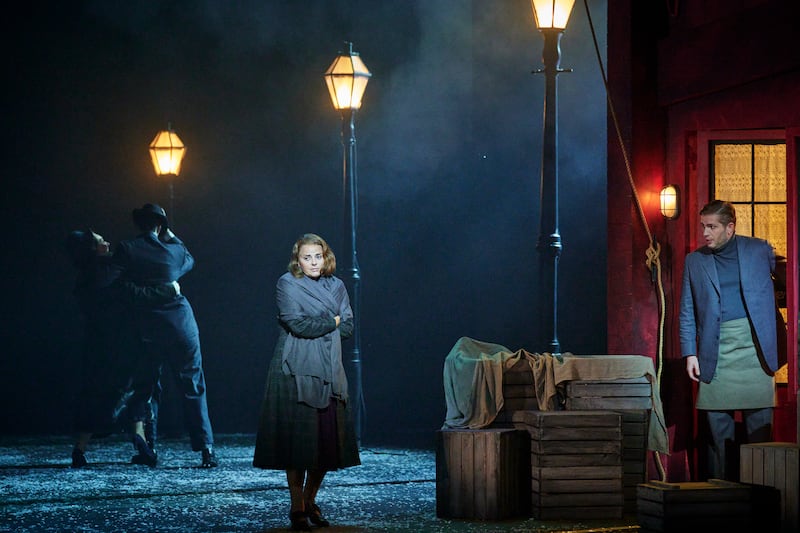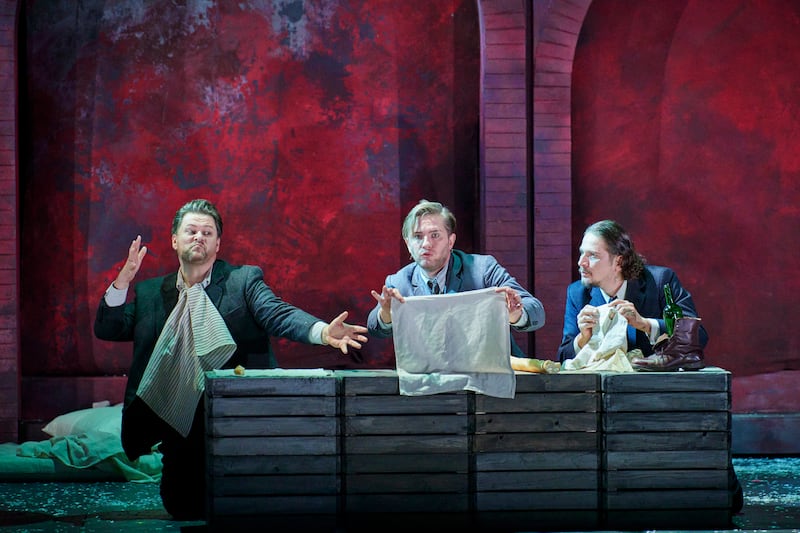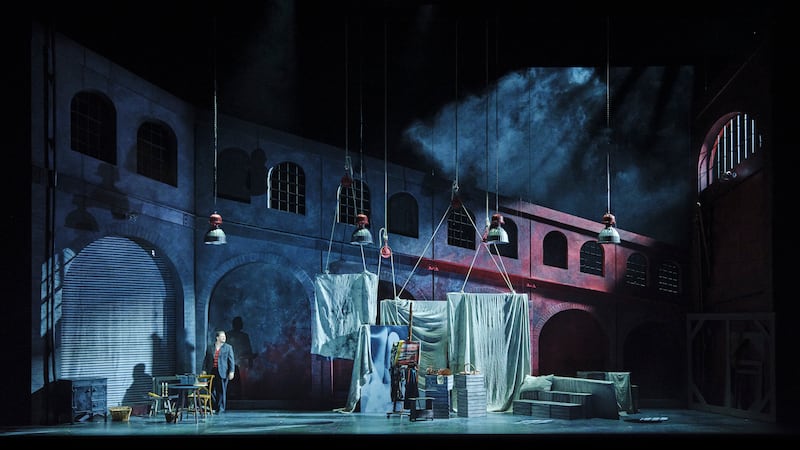La Bohème
Bord Gáis Energy Theatre, Dublin
★★★★☆
Someone beloved by the characters and audience will die at the end of Puccini’s La Bohème. A few consumptive coughs plainly signpost this early on. If you did not know already, you likely do now.
Despite its inexorable march towards death, La Bohème is an opera that prominently features antics in three of its four acts. This brings a dramatic irony that must be quite challenging to work with: seduce the audience into laughing along, tapping their toes and forfeiting their foreknowledge until they feel almost as blissfully unaware as those on stage of the terrible grief to come at the end.
For Irish National Opera (INO), in its co-production with Opéra Orchestre National Montpellier, Orpha Phelan, as director, gets all the antics right. She maintains a nice understatement in the good-humoured banter between the poet Rodolfo – the tenor Merūnas Vitulskis – and his three artist flatmates as they make light of their cold, hungry existence and outmanoeuvre their landlord.
Clever Puccini: he leaves us so primed for the first gentle encounter between Rodolfo and the young woman from the flat upstairs, Mimi – soprano Celine Byrne – after the other lads have gone out. “Your little hand is frozen,” he sings. Phelan weaves imagery of hands throughout.
READ MORE
But it is antics again in act two, writ large, the streets of Paris, Christmas Eve, joyous mayhem. Here the interwar period – to which Phelan has updated the setting by a century – becomes colourfully real in the costumes and cafe exterior designed by Nicky Shaw. Waiters, ladies, gentlemen, street vendors, children, mothers, musicians and soldiers are all in constant happy motion, a three-ring circus brought merrily to life by the INO Chorus and the Independent Theatre Workshop Children’s Chorus.
Now the primary antics feature Musetta – the soprano Sarah Brady, vivacious in Marlene Dietrich tails – as she parades her new sugar daddy in a comic effort to secure the attention of her former beau and Rodolfo’s painter flatmate Marcello (the baritone Iurii Samoilov).
And then it is interval drinks, the foyer buzzing, and Puccini has everyone recalling any carefree days they may once have had themselves or, if younger, identifying with the ones on stage.



There are no antics in act three, months later, the snow no longer festive but cruel, and Vitulskis and Byrne painfully capturing the tension that has grown between Rodolfo and Mimi, her advancing fragility more obvious now. Shaw and the lighting designer Matt Haskins have people not appearing from the wings but emerging unsettlingly out of nowhere, complete darkness, notably a troop of black-clad monks who pass through without a word to the sound of predawn church bells.
Yet antics return one more time to open the final act, back in the flat, only to be harshly interrupted by the return of Musetta with Mimi, who is in her last hour. And you realise that Puccini, under the insightful stewardship of the conductor Sergio Alapont and the INO Orchestra, has been carefully manipulating you towards the emotional darkness of this final moment all along.
La Bohème, staged by Irish National Opera, continues at the Bord Gáis Energy Theatre, Dublin, on Wednesday, November 22nd, Thursday, November 23rd, Saturday, November 25th, and Sunday, November 26th











